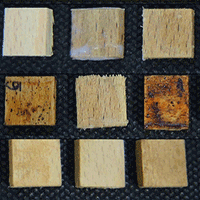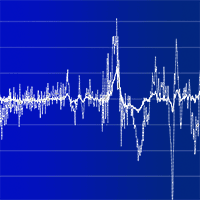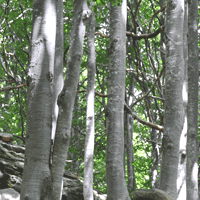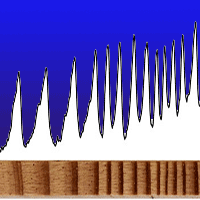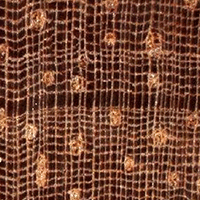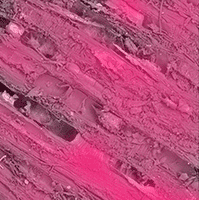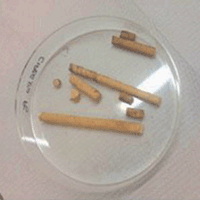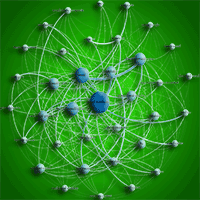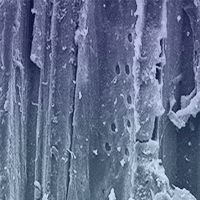Wood use in bio-building should be considered as one of the main pillars of sustainability. According to international standards, beech wood (Fagus sylvatica L.) is a rather less durable species as it is subject to degradation due to weathering, though it is abundantly available to a more intense use. Service life of beech products and wood products in general can be enhanced by different methods, such as heat treatments, but new chances are offered by coating technologies. However, to ensure protection from wood-destroying organisms, most commercial coatings include components that could harm human health, other organisms and the environment. Therefore, coating industry has to develop more eco-friendly solutions in order to decrease its impact on human health and environment. The objective of this article was to modify commercial acrylic varnish by adding cellulose nanocrystals (CNC) and lignin (LN) extracted from beech wood and investigate their effect on water sorption, additive dispersion in the coating matrix and coating resistance to bacterial attack. Contact angle, weight gain and colour difference were analysed and FT-IR mapping was applied. The performance of CNC was promising, as it enhanced water sorption of the modified coating. However, protection against bacterial attack was not satisfying. On the other hand, chemically unmodified lignin did not show positive effects as component in the coating formulation. Nevertheless, the currently limited usage of these two renewable and abundant resources urgently calls for their more efficient utilization, in order to create additional value with industry side-streams producing novel bio-based materials. Further experiments are needed in order to obtain better dispersion of the particles and higher resistance to bacterial attacks.
Keywords
, , , , , ,
Citation
Jusic J, Tamantini S, Romagnoli M, Vinciguerra V, Di Mattia E, Zikeli F, Cavalera M, Scarascia Mugnozza G (2021). Improving sustainability in wood coating: testing lignin and cellulose nanocrystals as additives to commercial acrylic wood coatings for bio-building. iForest 14: 499-507. - doi: 10.3832/ifor3782-014
Academic Editor
Mauro Maesano
Paper history
Received: Feb 13, 2021
Accepted: Sep 02, 2021
First online: Nov 11, 2021
Publication Date: Dec 31, 2021
Publication Time: 2.33 months
© SISEF - The Italian Society of Silviculture and Forest Ecology 2021
Open Access
This article is distributed under the terms of the Creative Commons Attribution-Non Commercial 4.0 International (https://creativecommons.org/licenses/by-nc/4.0/), which permits unrestricted use, distribution, and reproduction in any medium, provided you give appropriate credit to the original author(s) and the source, provide a link to the Creative Commons license, and indicate if changes were made.

Breakdown by View Type
(Waiting for server response...)
Article Usage
Total Article Views: 33807
(from publication date up to now)
Breakdown by View Type
HTML Page Views: 27966
Abstract Page Views: 2885
PDF Downloads: 2441
Citation/Reference Downloads: 9
XML Downloads: 506
Web Metrics
Days since publication: 1484
Overall contacts: 33807
Avg. contacts per week: 159.47
Article Citations
Article citations are based on data periodically collected from the Clarivate Web of Science web site
(last update: Mar 2025)
Total number of cites (since 2021): 14
Average cites per year: 2.80
Publication Metrics
by Dimensions ©
Articles citing this article
List of the papers citing this article based on CrossRef Cited-by.
(1)
Ago M, Tardy BL, Wang L, Guo J, Khakalo A, Rojas OJ (2017)Supramolecular assemblies of lignin into nano- and microparticles. MRS Bulletin 42 (5): 371-378.
CrossRef |
Gscholar
(2)
Akbarnezhad M, Rasouli D, Yousefi H, Mashkour M (2020)Weathering performance of beech wood coated with acrylic paint containing UV stabilizers of dihydroxy benzophenone and nano zinc oxide. Drvna Industrija 71 (4): 403-409.
CrossRef |
Gscholar
(3)
Bodîrlau R, Teaca CA, Spiridon I (2008)Chemical modification of beech wood: effect on thermal stability. BioResources 3 789-800.
CrossRef |
Gscholar
(4)
Brunetti M, Nocetti M, Pizzo B, Aminti G, Cremonini C, Negro F, Zanuttini R, Romagnoli M, Mugnozza G (2020)Structural products made of beech wood: quality assessment of the raw material. European Journal of Wood and Wood Products 78: 961-970.
CrossRef |
Gscholar
(5)
Chirkova J, Andersone I, Andersons B, Kurnosova N (2009)Lignin as a modifier for enhancing the durability of wood. Pro Ligno 5 (2): 71-77.
Online |
Gscholar
(6)
De Angelis M, Romagnoli M, Vek V, Poljanšek I, Oven P, Thaler N, Lesar B, Krzišnik D, Humar M (2018)Chemical composition and resistance of Italian stone pine (
Pinus pinea L.) wood against fungal decay and wetting. Industrial Crops and Products 117 187-196.
CrossRef |
Gscholar
(7)
De Cesare F, Di Mattia E, Zussman E, Macagnano A (2019)A study on the dependence of bacteria adhesion on the polymer nanofibre diameter. Environmental Science: Nano 6 (3): 778-797.
CrossRef |
Gscholar
(8)
Delfanti LMP, Bedini R, Romagnoli M, Recanatesi F, Meacci F, Caruso L, Manzo A, Salvati L (2014)Estimation of agroforestry biomasses available for energy purposes in a municipality in central Italy as instrument for energy planning. Applied Mathematical Sciences 8 (131): 6577-6587.
CrossRef |
Gscholar
(9)
Dietrich LE, Okegbe C, Price-Whelan A, Sakhtah H, Hunter RC, Newman DK (2013)Bacterial community morphogenesis is intimately linked to the intracellular redox state. Journal of Bacteriology 195 (7): 1371-1380.
CrossRef |
Gscholar
(10)
Dos Santos P, García A, Cademartori PH, Gatto DA, Labidi J (2012)Study of the use of organosolv lignin as bio-preservative of wood. In: Proceedings of the “2012 IUFRO Conference IRG Annual Meeting” (Products DF). Lisbon (Portugal) 8-13 July 2012. IRG Secretariat, Stockholm, Sweden, pp. 1-11.
Gscholar
(11)
Gao L, Gan W, Xiao S, Zhan X, Li J (2016)A robust superhydrophobic antibacterial Ag-TiO
2 composite film immobilized on wood substrate for photodegradation of phenol under visible-light illumination. Ceramics International 42 (2): 2170-2179.
CrossRef |
Gscholar
(12)
Gibbons MJ, Nikafshar S, Saravi T, Ohno K, Chandra S, Nejad M (2020)Analysis of a wide range of commercial exterior wood coatings. Coatings 10 (1013): 1-19.
CrossRef |
Gscholar
(13)
Goswami J, Haque E, Fox DM, Gilman JW, Holmes GA, Moon RJ, Kalaitzidou K (2019)The effect of cellulose nanocrystal coatings on the glass fiber-epoxy interphase. Materials 12 (12): 15.
CrossRef |
Gscholar
(14)
Griffini G, Passoni V, Suriano R, Levi M, Turri S (2015)Polyurethane coatings based on chemically unmodified fractionated lignin. ACS Sustainable Chemistry and Engineering 3 (6): 1145-1154.
CrossRef |
Gscholar
(15)
Hamad MN-E, Marrez D, El-Sherbieny S (2020)Toxicity evaluation and antimicrobial activity of purified pyocyanin from
Pseudomonas aeruginosa. Biointerface Research in Applied Chemistry 10 (6): 6974-6990.
CrossRef |
Gscholar
(16)
Huang Z, Feng MW (2016)Studies of lignin as wood preservative - A literature review. In: Proceedings of the “37th Annual General Meeting”. Vancouver (Canada). FP Innovation, Vancouver, Canada, pp. 4-6.
Gscholar
(17)
Klein SE, Rumpf J, Alzagameem A, Rehahn M, Schulze M (2019)Antioxidant activity of unmodified kraft and organosolv lignins to be used as sustainable components for polyurethane coatings. Journal of Coatings Technology and Research 16 (6): 1543-1552.
CrossRef |
Gscholar
(18)
Kluge M, Veigel S, Pinkl S, Henniges U, Zollfrank C, Roessler A, Gindl-Altmutter W (2017)Nanocellulosic fillers for waterborne wood coatings: reinforcement effect on free-standing coating films. Wood Science and Technology 51 601-613.
CrossRef |
Gscholar
(19)
Marini F, Zikeli F, Corona P, Vinciguerra V, Manetti M, Portoghesi L, Scarascia Mugnozza G, Romagnoli M (2020)Impact of bio-based (tannins) and nano-scale (CNC) additives on bonding properties of synthetic adhesives (PVAc and MUF) using chestnut wood from young coppice stands. Nanomaterials 10 (5): 956-968.
CrossRef |
Gscholar
(20)
Oberhofnerová E, Simunková K, Dvorák O, Sterbová I, Hiziroglu S, Sedivka P, Panek M (2019)Comparison of exterior coatings applied to oak wood as a function of natural and artificial weathering exposure. Coatings 9: 864-878.
CrossRef |
Gscholar
(21)
Ozgenç O, Durmaz S, Sahin S, Boyaci IH (2020)Evaluation of the weathering resistance of waterborne acrylic- and alkyd-based coatings containing HALS, UV absorber, and bark extracts on wood surfaces. Journal of Coatings Technology and Research 17 (2): 461-475.
CrossRef |
Gscholar
(22)
Paletto A, Bernardi S, Pieratti E, Teston F, Romagnoli M (2019)Assessment of environmental impact of biomass power plants to increase the social acceptance of renewable energy technologies. Heliyon 5 (7): e02070.
CrossRef |
Gscholar
(23)
Perfumo A, Banat IM, Canganella F, Marchant R (2006)Rhamnolipid production by a novel thermophilic hydrocarbon-degrading
Pseudomonas aeruginosa AP02-1. Applied Microbiology and Biotechnology 72 (1): 132-138.
CrossRef |
Gscholar
(24)
Poaty B, Vardanyan V, Wilczak L, Chauve G, Riedl B (2014)Modification of cellulose nanocrystals as reinforcement derivatives for wood coatings. Progress in Organic Coatings 77 (4): 813-820.
CrossRef |
Gscholar
(25)
Qi J, Wang B, Li J, Ning H, Wang Y, Kong W, Shen L (2015)Genetic determinants involved in the biodegradation of naphthalene and phenanthrene in
Pseudomonas aeruginosa PAO1. Environmental Science and Pollution Research 22 (9): 6743-6755.
CrossRef |
Gscholar
(26)
Rao F, Yahui Z, Bao M, Zhang Z, Bao Y, Li N, Chen Y, Yu W (2019)Photostabilizing efficiency of acrylic-based bamboo exterior coatings combining benzotriazole and zinc oxide nanoparticles. Coatings 9: 533-548.
CrossRef |
Gscholar
(27)
Rieger KA, Birch NP, Schiffman JD (2013)Designing electrospun nanofiber mats to promote wound healing - A review. Journal of Materials Chemistry B 1 (36): 4531-4541.
CrossRef |
Gscholar
(28)
Romagnoli M, Cavalli D, Pernarella R, Zanuttini R, Togni M (2015)Physical and mechanical characteristics of poor-quality wood after heat treatment. iForest - Biogeosciences and Forestry 8: 884-891.
CrossRef |
Gscholar
(29)
Romagnoli M, Fragiacomo M, Brunori A, Follesa M, Scarascia Mugnozza G (2019)Solid wood and wood based composites: the challenge of sustainability looking for a short and smart supply chain. In: “Digital Wood Design. Lecture Notes in Civil Engineering” (Bianconi F, Filippucci M eds). Springer Internation Publishing, Cham, Switzerland, pp. 783-807.
CrossRef |
Gscholar
(30)
Rumbo C, Tamayo-Ramos JA, Caso MF, Rinaldi A, Romero-Santacreu L, Quesada R, Cuesta-López S (2018)Colonization of electrospun polycaprolactone fibers by relevant pathogenic bacterial strains. ACS Applied Materials and Interfaces 10 (14): 11467-11473.
CrossRef |
Gscholar
(31)
Sana TG, Lomas R, Gimenez MR, Laubier A, Soscia C, Chauvet C, Conesa A, Voulhoux R, Ize B, Bleves S (2019)Differential modulation of quorum sensing signaling through QslA in
Pseudomonas aeruginosa strains PAO1 and PA14. Journal of Bacteriology 201 (21): e00362-19.
CrossRef |
Gscholar
(32)
Schulze P, Leschinsky M, Seidel-Morgenstern A, Lorenz H (2019)Continuous separation of lignin from organosolv pulping liquors: combined lignin particle formation and solvent recovery. Industrial and Engineering Chemistry Research 58 (9): 3797-3810.
CrossRef |
Gscholar
(33)
Sciomenta M, Spera L, Bedon C, Rinaldi V, Fragiacomo M, Romagnoli M (2021)Mechanical characterization of novel homogeneous beech and hybrid beech-corsican pine thin cross-laminated timber panels. Construction and Building Materials 271: 121589.
CrossRef |
Gscholar
(34)
Sousa AM, Machado I, Nicolau A, Pereira MO (2013)Improvements on colony morphology identification towards bacterial profiling. Journal of Microbiological Methods 95 (3): 327-335.
CrossRef |
Gscholar
(35)
Teaca C, Rosu D, Mustata AC, Rusu T, Rosu L, Irina R, Varganici CD (2019)Natural bio-based products for wood coating and protection against degradation: a review. BioResources 14 (2): 4873-4901.
CrossRef |
Gscholar
(36)
UNI-EN-335 (2013)Durability of wood and wood-based products - Use classes: definitions, application to solid wood and wood-based products. Italian Unification Body (UNI), Milan, Italy, pp. 20.
Gscholar
(37)
UNI-EN-350 (2016)Durability of wood and wood-based products - Testing and classification of the durability to biological agents of wood and wood-based materials. Italian Unification Body (UNI), Milan, Italy, pp. 32.
Gscholar
(38)
UNI-EN-ISO/CIE-11664-4 (2019)Colourimetry. Italian Unification Body (UNI), Milan, Italy, pp. 20.
Gscholar
(39)
Van Den Bulcke J, Rijckaert V, Van Acker J, Stevens M (2006)Adhesion and weathering performance of waterborne coatings applied to different temperate and tropical wood species. Journal of Coatings Technology Research 3 (3): 185-191.
Online |
Gscholar
(40)
Vardanyan V, Galstian T, Riedl B (2014)Effect of addition of cellulose nanocrystals to wood coatings on color changes and surface roughness due to accelerated weathering. Journal of Coatings Technology and Research 12 247-258.
CrossRef |
Gscholar
(41)
Veigel S, Grüll G, Pinkl S, Obersriebnig M, Müller U, Gindl-Altmutter W (2014)Improving the mechanical resistance of waterborne wood coatings by adding cellulose nanofibres. Reactive and Functional Polymers 85 214-220.
CrossRef |
Gscholar
(42)
Yan X, Tao Y, Qian X (2020)Preparation and optimization of waterborne acrylic core microcapsules for waterborne wood coatings and comparison with epoxy resin core. Polymers (Basel) 12 (10): 2366.
CrossRef |
Gscholar
(43)
Zikeli F, Vinciguerra V, D’Annibale A, Capitani D, Romagnoli M, Scarascia Mugnozza G (2019)Preparation of lignin nanoparticles from wood waste for wood surface treatment. Nanomaterials 9 (2): 281-298.
CrossRef |
Gscholar
(44)
Zikeli F, Vinciguerra V, Sennato S, Scarascia Mugnozza G, Romagnoli M (2020)Preparation of lignin nanoparticles with entrapped essential oil as a bio-based biocide delivery system. ACS Omega 5 (1): 358-368.
CrossRef |
Gscholar
(45)
Zikeli F, Vinciguerra V, Taddei Anna R, D’Annibale A, Romagnoli M, Scarascia Mugnozza G (2018)Isolation and characterization of lignin from beech wood and chestnut sawdust for the preparation of lignin nanoparticles (LNPs) from wood industry side-streams. Holzforschung 72 (11): 961-972.
CrossRef |
Gscholar
(46)
Zmihorska-Gotfryd A (2004)Coating compositions based on modified phenol-formaldehyde resin and urethane prepolymers. Progress in Organic Coatings 49 (2): 109-114.
CrossRef |
Gscholar
